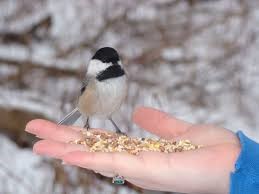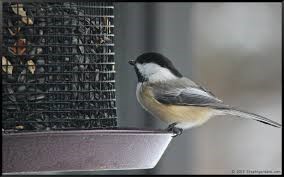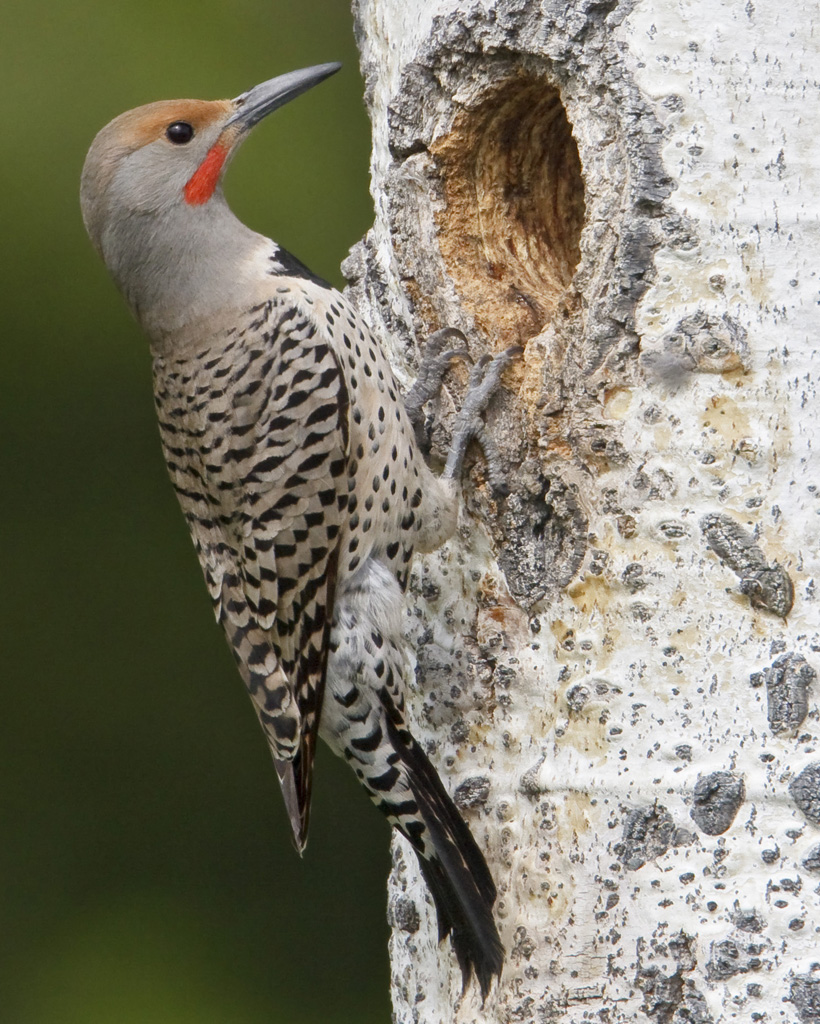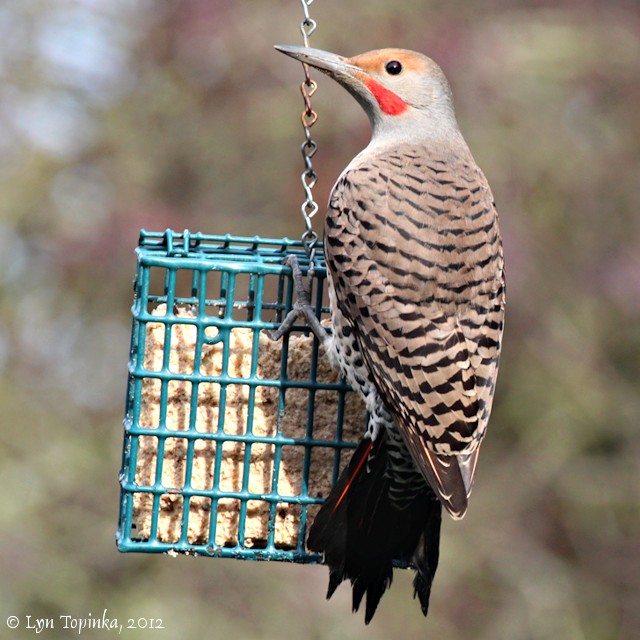It all started one afternoon, over twenty years ago when two dear friends hauled the “makings” of a four-feeder bird-feeding station into my backyard, assembled it and proclaimed “Happy Birthday!”
My new feeder station was constructed of a beautiful piece of driftwood they had rescued from a beach nearby. It had two holes drilled toward the top of the “log” for the insertion of two pieces of metal pipe. The pipe pieces stuck out at right angles, with holes drilled toward the ends for hanging four feeders. I dutifully filled my tube and hopper feeders as well as the suet cage, then sat down with my binoculars and Audubon Bird Guide to wait.
But contrary to a popular slogan—“If you build it they will come”—they didn’t.
It can take a while…a few days, even a few weeks…before the locals realize there is a free meal waiting for them in your yard. This was true for me as well. As I remember, it took almost a month before they found that first banquet.
The first to arrive were the black-capped chickadees. These hardy little birds are almost always the first to show up when the feeders are filled with fresh seed and suet. I often hear their buzzy ”chick-a-dee-dee-dee” before spotting them hopping among the branches of our hawthorn tree (a favorite lookout spot for many of the birds that visit our feeders). Those little black-headed birds, long a favorite of mine, are very entertaining. They will fly to one of the tube feeders, land on the edge, grab a sunflower seed in their beak and return to a nearby branch to place the seed in one claw, then proceed to peck daintily away at the captured morsel. They flit happily back and forth from feeder to perch until they are satisfied.
These brave little chickadees show no fear of humans and are known to have been trained to eat out of your hand! They like to build their nests in cavities in trees. One season we were able to watch a pair raise their chicks in the hollow of an old cherry snag in the backyard. You can also put up nesting boxes for these and other small birds to use for family raising. We currently have a few of these boxes hung on our fence. Hoping for more occupants!
I have been privileged to welcome a wide variety of birds to my feeders each year. I see dark-eyed juncos, house sparrows, house finches, goldfinches, nuthatches, wrens, pine siskins, bushtits and even an occasional varied thrush. Of course, the robins, crows and pigeons are regular visitors, too. I have kept a list of these sightings in my bird guide for future reference and remembrance.
photo: Claudia Thies
My other favorite bird is a member of the woodpecker family—the northern flicker. These woodpeckers can be seen all over the country with the yellow-shafted flicker in the eastern states and the red-shafted flicker here in the west. I have seen an occasional yellow-shafted flicker in my yard but, by far, most of the tail feathers I have collected from underneath the feeding stations are the red ones.
photo: Claudia Thies
It’s music to my ears when I hear the familiar “wicka, wicka, wicka” or the sometimes piercing “kleer” from nearby trees. You can also hear short bursts of drumming on the sides of trees, your house and even on metal chimney toppers. This drumming is usually done by males proclaiming and protecting their territories. Northern flickers often mate for life and will return to the same area for nesting, so it’s likely that the birds who come to my seed and suet feeders are the ones I’ve been watching for a few years!
These birds love to feed from my hanging suet cage, balancing themselves by tucking their tail feathers under the bottom of the cage and hanging on by their claws. They have excessively long tongues which allow them to reach between the bars of the cage to access the suet. My suet cage has a solid metal top and is the scene for a yearly comedy show involving the young birds learning how to eat from the cage below. They will fly in from a neighboring tree or fence, land on the metal top, then kind of dance and slip around trying to figure out how to get positioned so they can enjoy the tasty treat inside the cage. We call this “amateur day at the suet cage” around our house!
The one battle that bird-feeding enthusiasts often have to wage is against those very hungry, bushy-tailed squirrels that live in our yards. I have a number of squirrel families that nest in the ten 80-foot-tall poplars that border my backyard. When my friends first erected the feeding station, we had it located near the hawthorn tree I mentioned earlier. So, the squirrels could just climb the tree, hang off of one of the branches and leap onto the feeders. That didn’t last long. The feeding station was re-located out into the center of the yard a nice 8-foot distance from the nearby trees. I also hung a metal baffle (looks like an upside down elongated can) about 5 feet up the support so they were unable to climb up from below. Problem solved!
photo: Cara Litberg, National Wildlife Federation
In spite of the minor challenges I’ve faced, engaging in this hobby is one of the best things I’ve ever done. I encourage you to give it a try! Check out our blog post The Basics of Backyard Bird Feeding for more information.
For more even information take a look at our Pollinator & Wildlife Gardening Resources and visit our Community Partners page for other bird-related websites.
You can also visit these bird-related websites:
Washington Department of Fish & Wildlife: Backyard Wildlife Sanctuary
National Wildlife Federation: Garden for Wildlife
Audubon at Home in Seattle: Gardening for Life Guide
Wild Birds Unlimited Bird Feeding Basics








